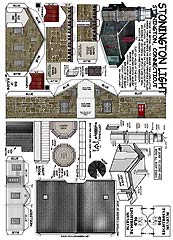
Stonington, CT - $$4.95
The Stonington lighthouse was once the beacon for the many vessels approaching Stonington's harbor from Long Island Sound. The original 30-foot stone tower, which was built on the Point in 1823, supported a lantern containing ten oil lamps and parabolic reflectors. Its beacon was visible 12 miles at sea. During the next few years, however, storms and shore erosion took their toll on the exposed site. In 1840 the structure was dismantled and the the outer end of a new west breakwater protecting the harbor entrance.
Stonington Light House, Stonington, CT
 The Stonington lighthouse was once the beacon for the many vessels approaching Stonington's harbor from Long Island Sound. The original 30-foot stone tower, which was built on the Point in 1823, supported a lantern containing ten oil lamps and parabolic reflectors. Its beacon was visible 12 miles at sea.
The Stonington lighthouse was once the beacon for the many vessels approaching Stonington's harbor from Long Island Sound. The original 30-foot stone tower, which was built on the Point in 1823, supported a lantern containing ten oil lamps and parabolic reflectors. Its beacon was visible 12 miles at sea.
During the next few years, however, storms and shore erosion took their toll on the exposed site. In 1840 the structure was dismantled and the the outer end of a new west breakwater protecting the harbor entrance.
Today it sits on the Stonington Harbor as a lovely Lighthouse Museum and is well worth visiting along with the nearby
Stonington Light House, Stonington, Connecticut
Stonington History:
 The earliest settlers in Stonington, William and Anna Chesebrough
and their five sons, came from the Plymouth colony in 1649 to
settle on Wequetequock Cove. The following year Thomas Stanton
built a trading post on the Pawcatuck River. Two years later Walter
Palmer, Thomas Miner, and Captain George Denison arrived. Many
more families seeking homesteads soon followed.
The earliest settlers in Stonington, William and Anna Chesebrough
and their five sons, came from the Plymouth colony in 1649 to
settle on Wequetequock Cove. The following year Thomas Stanton
built a trading post on the Pawcatuck River. Two years later Walter
Palmer, Thomas Miner, and Captain George Denison arrived. Many
more families seeking homesteads soon followed.
In 1658 Massachusetts claimed the town naming it Southertown. Governor John Winthrop, Jr. obtained the Connecticut charter from England in 1662 which set the boundaries of the town. The General Court changed the name from Southertown to Mystic in 1665 and renamed it Stonington in 1666. Originally a farming community, Stonington became known in time for its whaling, sealing and shipbuilding. Militia from Stonington and nearby towns repulsed two British naval attacks, once during the American Revolution and again in the War of 1812.
In the 19th century Stonington prospered as a railroad steamboat terminus between Boston and New York. The Joslyn Fire Arms Company Atwood Machine Company and the American Velvet Mill provided jobs ashore while the fishing fleet continued to thrive at sea.
Today Stonington's heritage is preserved in its tree lined village
streets and historic houses. The Captain Nathaniel Brown Palmer
House and the Old Lighthouse Museum tell the stories of the people
who made Stonington one of the most charming and varied small
towns in Connecticut.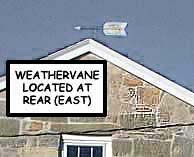
Ye Old Lighthouse Museum...
Stonington's lighthouse became the museum of the Historical Society in 1927. Now six rooms of exhibits testify to the rich and varied history of this coastal region through exhibits depicting the lives of Stonington's fishermen and farmers, merchants and shipbuilders, pottery makers, blacksmithing and many other trades. Each year a special aspect of Stonington history is featured. One room with a large doll house is reserved for items of interest to children and adults.
Visitors of all ages enjoy climbing the old stone steps of the tower for an exhilarating view in all directions. Shoppers may browse in the gift area for unusual books, toys and mementos.
To get to the Old Lighthouse Museum:
Exit 91 on 1-95 (one exit east of Mystic Seaport and Aquarium.) Turn south on Route 234 (Pequot Trail) 0.3 miles to North Main Street... Then turn left on North Main 1.5 miles to light at intersection with US Route l.
Cross Route 1 on North Main and continue straight to stop sign. Left then next right over railroad bridge onto Water Street. Follow Water Street through historic Stonington Village to the south end. Park at the Point and walk up to the Lighthouse.
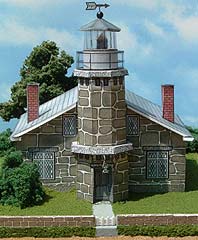 |
This model was submitted by Richard Doll who wrote,
"The weathervane on top of the lighting arrestor is not
an error, they moved it from the back of the roof to the top
of the lightroom. Great job, Richard! |
Palmer, born in 1799, and his brother Alexander' born seven years later went to sea at an early age. Nathaniel became a ship's master before his 19th birthday as did Alexander by the time he was 21. They were young men who ventured into the most desolate regions of the world in search of profits from sealing and whaling.
During a voyage to the South Atlantic in 1820-2, Nathaniel, captain of the 47-foot sloop Hero, pressed southward in search of new seat rookeries. On November 17,1820 he sighted "land not yet laid down on my chart." He had discovered a peninsula which would later become known as Palmer Land on the continent of Antarctica.
For the next twenty years the two brothers distinguished themselves
as career captains sailing packet and clipper 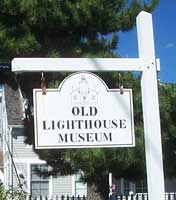 ships to Europe
and the Orient. In 1840 Alexander was presented with a gold medal
by Queen Victoria for rescuing the crew of the shipwrecked 'Eugenie'.
After his retirement from the sea, Alexander served as a representative
and senator in the Connecticut Legislature. He died in 1894.
ships to Europe
and the Orient. In 1840 Alexander was presented with a gold medal
by Queen Victoria for rescuing the crew of the shipwrecked 'Eugenie'.
After his retirement from the sea, Alexander served as a representative
and senator in the Connecticut Legislature. He died in 1894.
Nathaniel, known around the globe as "Captain Nat," turned his talents to ship design and building and during the 1840s and 50s owned shares in some of the fastest and largest clipper ships. Nathaniel died June 21, 1877 in San Francisco and was brought home for burial in the family plot.
The Captain Nathaniel B. Palmer House...A National Historic Landmark:
This 16-room Victorian mansion was built in 1852 by two brothers' Captains Nathaniel Brown Palmer and Alexander Smith Palmer. Majestically sited on a high rise of ground overlooking the upper end of Stonington harbor' "Pine Point" offered sweeping water views in all directions. From its octagonal cupola, the family could identify ships arriving from distant ports. Meticulous craftsmanship of the ornate woodwork testifies to the work of shipwrights.
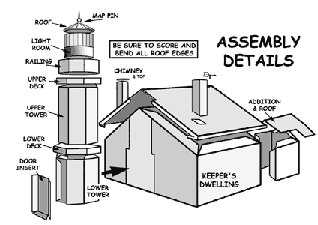
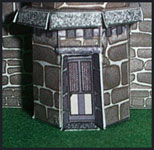


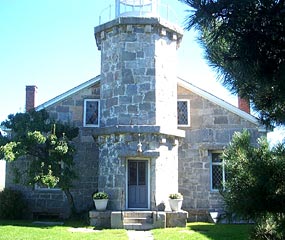
General Info:

Both buildings are owned and operated by The Stonington Historical
Society, Inc. P.O. Box 103, Stonington, CT 06378. Adult and child
admission fees are charged; combination passes and group rates
are available. Buildings are open May to November during hours
shown below. Please phone for additional information and rates.
Lighthouse:
10 am to 5 pm daily in July & August.
Closed Mondays the other months.
7 Water Street, Stonington, CT 06378
Phone: (860) 535-1440
Palmer House:
10 am to 4 pm daily except Mondays.
Tours on the hour; last tour at 3 pm.
40 Palmer Street' Stonington, CT 0637
\


